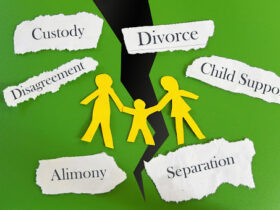New divorce laws that came into force on the 6th April 2022 have meant the rate of couples seeking an end to their marriage has soared.
The new ‘no fault’ route for married pairs to officially part ways is designed to better meet the needs of modern couples. The change in the law is intended to allow partners to resolve their issues in an amicable fashion. This should better avoid conflict over parenting arrangements and reduce the impact of divorce on children as well as allow spouses to better resolve issues such as property and finance.
What is a ‘no fault’ divorce?
The amendments to the divorce regulations mean that couples are no longer required to apportion blame when a marriage ends. The new ‘no fault’ option allows either spouse, or the couple together, to apply for a divorce by stating that their marriage has irretrievably broken down. The change also applies to the dissolution of civil partnerships.
It is also no longer possible to contest an application for divorce or to legally end a civil partnership. Uncontested divorce and civil partnership claims can now be processed by a court without the need to attend in person. Contested divorces had become increasingly rare but the divorcing couple were usually required to attend two court hearings.
Divorce rates in 2022
Some MPs objected to the changes to divorce laws citing a likely spike in cases. And that has occurred. Widely reported in the media, lawyers noted a 50% rise in divorce applications just a week after the new law came into force.
That jump may, in part, be due to couples putting off starting divorce proceedings, awaiting the introduction of the ‘no fault’ option that simplifies the process. The latest official figures from the Office of National Statistics (ONS) only relate to 2020, when there was a fall in the divorce rate. During that year, the number fell by 4.8% compared to 2019 to a total of 103,592, with 98.9% of those between opposite-sex couples.
We will need to wait a little longer to find out how the overall picture for divorce rates proceeds during 2022. Seeing as the ONS figures relate to before Covid-19 hit, the effect of the pandemic may also play a part. It was speculated during the height of national lockdowns that divorce enquiries rose markedly as relationships became fraught with couples being forced to spend more time together along with the additional stresses of the coronavirus crisis.
The process for a ‘no fault’ divorce
Previously, one of the spouses had to issue divorce proceedings against the other. Now either can do so even when the other does not agree to the divorce. Alternatively, a pair can start proceedings together without the option to object unless a challenge can be made on the basis of jurisdiction, the legal validity of the marriage, or if there are issues relating to coercion or fraud.
There have been concerns that the new simplified process might lead to couples rushing through agreements and settlements relating to crucial areas such as custody and arrangements for children, finances and property. The first step to avoiding complications when seeking a ‘no fault’ divorce is to hire the services of divorce law specialists to support you through the process.













